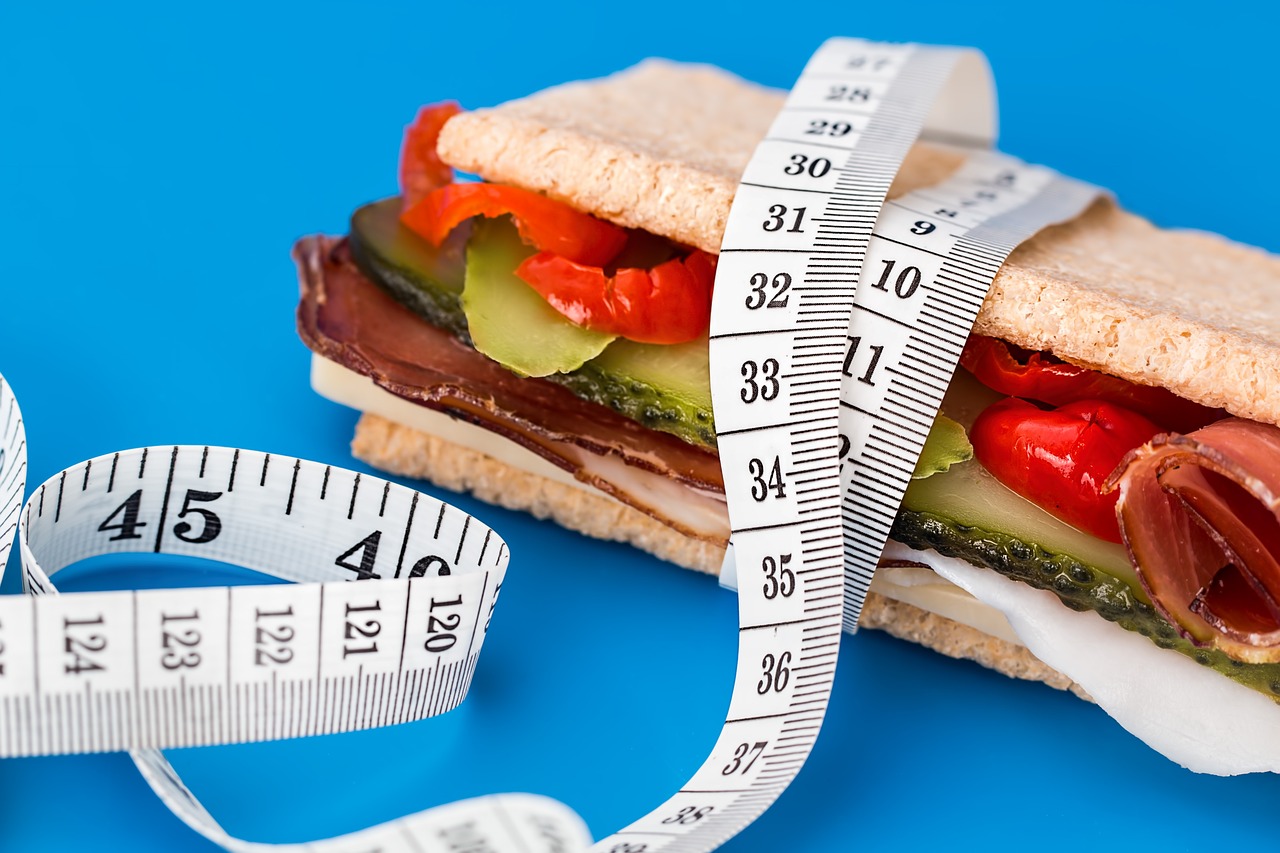If you’re looking for a simple and effective way to lower your blood pressure and improve your overall health, then the DASH Diet is for you. This popular eating plan has been proven to be highly effective in reducing hypertension and promoting heart health. By incorporating a variety of nutrient-rich foods and limiting sodium intake, the DASH Diet offers a practical and sustainable approach to managing high blood pressure. Discover how this diet can help you achieve a healthier lifestyle and bring your blood pressure under control.

This image is property of pixabay.com.
What is the DASH Diet?
Definition
The DASH Diet, also known as the Dietary Approaches to Stop Hypertension, is a flexible and balanced eating plan that aims to lower or prevent high blood pressure (hypertension). It emphasizes a nutrient-rich diet that is high in fruits, vegetables, whole grains, lean proteins, and low-fat dairy products, while limiting the intake of sodium, saturated fats, and added sugars.
Origin
The DASH Diet was initially developed by the National Heart, Lung, and Blood Institute (NHLBI) in the United States. The research team conducted studies to understand the impact of different dietary patterns on blood pressure. These studies led to the development of the DASH Diet, which has since gained popularity for its effectiveness in reducing hypertension.
Purpose
The primary purpose of the DASH Diet is to lower and manage blood pressure. Hypertension is a common health condition that can lead to serious complications such as heart disease, stroke, and kidney problems. By following the principles of the DASH Diet, individuals can not only improve their blood pressure levels but also reduce the risk of developing heart disease, maintain a healthy weight, and promote overall well-being.
Principles of the DASH Diet
Balanced Macronutrients
The DASH Diet emphasizes a balance of macronutrients, including carbohydrates, proteins, and fats. It encourages individuals to consume a variety of nutrient-dense foods to meet their daily nutritional needs. This balance provides the necessary energy and nutrients for optimal body functioning and overall health.
High in Fruits and Vegetables
Fruits and vegetables play a crucial role in the DASH Diet. These nutrient-packed foods are rich in vitamins, minerals, fiber, and antioxidants, which help maintain healthy blood pressure levels. Adding a variety of colorful fruits and vegetables to your meals not only enhances their flavor but also provides essential nutrients for your body.
Low in Sodium
Excessive sodium intake is known to contribute to high blood pressure. The DASH Diet recommends limiting sodium consumption to no more than 2,300 milligrams per day or even lower for individuals with hypertension. This can be achieved by reducing the consumption of processed foods, canned foods, and adding less salt to meals. Instead, herbs, spices, and other flavorings can be used to enhance the taste of dishes.
Low in Added Sugars
Added sugars, such as those found in sugary beverages and processed snacks, can contribute to weight gain and increase the risk of hypertension. The DASH Diet advises individuals to limit the intake of sugary foods and drinks. Instead, natural sugars from fruits can be consumed to satisfy sweet cravings while providing additional nutrients and fiber.
Moderate in Lean Proteins
Protein is an essential nutrient for building and repairing tissues in the body. The DASH Diet recommends including moderate amounts of lean proteins such as poultry, fish, legumes, and nuts in your meals. These protein sources are lower in saturated fat compared to red meats, promoting heart health and reducing the risk of developing cardiovascular diseases.
Moderate in Whole Grains
Whole grains are rich in fiber, vitamins, and minerals, and provide sustained energy throughout the day. The DASH Diet recommends incorporating whole grains such as brown rice, whole wheat bread, and oats into your meals. These healthy carbohydrates provide a steady release of energy and help control blood sugar levels.
Limited in Saturated and Trans Fats
Saturated and trans fats are known to increase cholesterol levels and contribute to heart disease. The DASH Diet advises individuals to limit the consumption of foods high in saturated and trans fats, such as processed meats, fried foods, and baked goods. Instead, healthier fat sources such as avocados, nuts, and olive oil can be included in moderation.
Benefits of the DASH Diet
Lowering Blood Pressure
One of the primary benefits of the DASH Diet is its effectiveness in lowering blood pressure. The emphasis on consuming nutrient-rich foods and reducing sodium intake has been shown to have a significant impact on blood pressure levels. Following the DASH Diet can help individuals achieve and maintain healthy blood pressure, reducing the risk of heart disease and stroke.
Reducing the Risk of Heart Disease
By following the DASH Diet, individuals can significantly reduce the risk of developing heart disease. The diet encourages a high intake of fruits, vegetables, whole grains, and lean proteins, which are all associated with a lower risk of cardiovascular diseases. Additionally, the reduction in sodium and saturated fat intake helps maintain healthy cholesterol levels and overall heart health.
Managing Weight
The DASH Diet supports weight management and healthy weight loss. With its emphasis on balanced macronutrients and portion control, individuals can achieve a calorie deficit while still receiving adequate nutrients. The inclusion of fiber-rich foods and lean proteins helps individuals feel fuller for longer, reducing the desire for overeating. By maintaining a healthy weight, individuals can lower their risk of developing hypertension and other chronic diseases.
Promoting Overall Health
The DASH Diet promotes overall health and well-being by encouraging the consumption of nutrient-dense foods and limiting unhealthy choices. The variety of fruits, vegetables, whole grains, lean proteins, and healthy fats ensures that individuals receive a wide range of vitamins, minerals, and antioxidants necessary for optimal body functioning. Following the DASH Diet can also improve digestion, support the immune system, and enhance energy levels.
Foods to Include in the DASH Diet
Fresh Fruits
A variety of fresh fruits can be included in the DASH Diet, such as apples, oranges, berries, and melons. These fruits provide essential vitamins, minerals, and fiber, while also satisfying the sweet tooth in a healthy way.
Fresh Vegetables
Including a wide range of fresh vegetables in the DASH Diet is essential for obtaining important nutrients and antioxidants. Leafy greens, broccoli, carrots, bell peppers, and tomatoes are excellent choices that can be incorporated into salads, stir-fries, or as side dishes.
Whole Grains
Whole grains, such as brown rice, quinoa, whole wheat bread, and oats, are the preferred choice in the DASH Diet. These grains are higher in fiber and essential nutrients compared to refined grains, providing sustained energy and supporting digestive health.
Lean Proteins
Lean proteins are an important component of the DASH Diet. Skinless poultry, fish, eggs, legumes, and nuts are great options that provide necessary amino acids without the added saturated fats found in red meats.
Low-Fat Dairy Products
Low-fat dairy products are recommended in moderation for their calcium and protein content. Skim milk, low-fat yogurt, and reduced-fat cheese can be included in the DASH Diet to meet calcium requirements while minimizing saturated fat intake.
Nuts and Seeds
Nuts and seeds are a source of healthy fats, protein, and fiber. Almonds, walnuts, chia seeds, and flaxseeds are excellent additions to the DASH Diet for their nutritional value and potential heart health benefits.
Healthy Fats
Including healthy fats in moderation is an important aspect of the DASH Diet. Avocados, olive oil, and fatty fish like salmon and trout provide omega-3 fatty acids and monounsaturated fats that support heart health.

This image is property of pixabay.com.
Foods to Limit or Avoid in the DASH Diet
Processed Foods
Processed foods typically contain high levels of sodium, added sugars, and unhealthy fats. These include packaged snacks, frozen meals, and pre-packaged deli meats. Limiting or avoiding these foods is essential to maintain the principles of the DASH Diet and reduce the risk of hypertension.
Salty Snacks
Salty snacks like chips, pretzels, and salted nuts should be limited or replaced with healthier alternatives in the DASH Diet. These snacks are high in sodium and can contribute to high blood pressure.
High-Fat Foods
Foods high in saturated and trans fats, such as butter, margarine, full-fat dairy products, and fried foods, are not recommended in large quantities in the DASH Diet. These fats can negatively impact cholesterol levels and increase the risk of heart disease.
Sugary Sodas and Drinks
Sugary sodas and drinks are often high in added sugars, providing empty calories without any nutritional value. These beverages can contribute to weight gain and increase the risk of developing hypertension. Water, unsweetened teas, and infused water can be healthy alternatives.
Red Meat
While lean proteins are encouraged in the DASH Diet, red meat should be consumed in moderation due to its higher saturated fat content. Choosing lean cuts of beef, and opting for poultry and fish more frequently, can help reduce the risk of heart disease.
Fast Food
Fast food tends to be high in sodium, unhealthy fats, and added sugars, making it unsuitable for the DASH Diet. Instead, preparing homemade meals using fresh, whole ingredients allows for greater control over the nutritional content and sodium levels.
Sample DASH Diet Meal Plan
Breakfast
- Overnight oats made with rolled oats, low-fat milk, chia seeds, and topped with fresh berries
- A side of sliced avocado and whole wheat toast
- A glass of unsweetened almond milk
Lunch
- Grilled chicken salad with a variety of mixed greens, cherry tomatoes, cucumbers, and bell peppers
- Quinoa or brown rice as a side dish
- A small handful of almonds as a snack
Dinner
- Baked salmon seasoned with herbs and served with steamed broccoli and roasted sweet potatoes
- A side of whole wheat couscous or quinoa
- A mixed green salad with a light vinaigrette dressing
Snacks
- Carrot sticks with hummus
- Greek yogurt with a sprinkle of granola
- Sliced apples with almond butter

This image is property of pixabay.com.
Tips for Implementing the DASH Diet
Gradual Changes
Implementing the DASH Diet gradually is key to long-term success. Start by making small changes, such as increasing fruit and vegetable intake, reducing sodium, and substituting healthier options for unhealthy snacks. Gradually adopt the principles of the DASH Diet over time to make it a sustainable lifestyle change.
Reading Food Labels
Reading food labels is essential when following the DASH Diet. Pay attention to the sodium content, added sugars, and unhealthy fats listed on the labels of packaged foods. Opt for low-sodium, low-sugar, and low-fat options whenever possible.
Meal Prepping
Meal prepping can help ensure that healthy meals and snacks are readily available throughout the week. Plan and prepare meals in advance, making it easier to follow the DASH Diet even on busy days. Choose recipes and ingredients that align with the DASH Diet principles and portion them into individual containers for easy grab-and-go options.
Dining Out Strategies
When dining out, it can be challenging to adhere to the principles of the DASH Diet. However, there are strategies you can use to make healthier choices. Check the menu in advance for healthier options, request modifications to reduce sodium or unhealthy fats, and ask for dressings and sauces on the side to control portion sizes.
Staying Hydrated
Proper hydration is crucial for overall health and supporting the DASH Diet. Drinking an adequate amount of water throughout the day helps maintain optimal blood pressure levels and supports the body’s functions. Opt for water, herbal teas, or infused water instead of sugary beverages for better overall hydration.
Effectiveness of the DASH Diet
Scientific Studies and Research
Several scientific studies and research have shown the effectiveness of the DASH Diet in lowering and managing blood pressure. The original DASH study conducted by the NHLBI showed that the DASH Diet significantly reduced blood pressure levels compared to a typical American diet. Subsequent studies further supported these findings and demonstrated the benefits of the DASH Diet in preventing heart disease and promoting overall health.
Real-Life Success Stories
Many individuals have experienced real-life success with the DASH Diet. By adopting the DASH principles and making healthier lifestyle choices, people have not only successfully lowered their blood pressure but have also achieved weight loss, improved their cholesterol levels, and enhanced their overall well-being. These success stories highlight the effectiveness and sustainability of the DASH Diet as a long-term lifestyle change.

Precautions and Considerations
Consulting a Healthcare Professional
Before starting any new diet, including the DASH Diet, it is important to consult with a healthcare professional, especially if you have underlying health conditions or are taking medications. A healthcare professional can provide personalized guidance and recommendations based on your specific needs.
Individualized Modifications
While the DASH Diet is generally safe and beneficial for most individuals, it may require individual modifications to suit specific dietary preferences or health conditions. Working with a registered dietitian can help tailor the DASH Diet to meet your specific needs while still following the general principles.
Possible Side Effects
In some cases, individuals might experience side effects when starting the DASH Diet, such as changes in bowel movements due to increased fiber intake or initial food cravings. These side effects are typically temporary and can be managed by gradually increasing fiber intake or finding healthier alternatives to satisfy cravings.
Conclusion
The DASH Diet offers a comprehensive and healthy approach to lowering and managing high blood pressure. By following a balanced eating plan that emphasizes nutrient-rich foods, limits sodium and unhealthy fats, and promotes overall well-being, individuals can improve their blood pressure levels, reduce the risk of heart disease, manage weight, and enhance their overall health. The DASH Diet’s long-term lifestyle change is not only effective but also empowering, allowing individuals to take control of their health and well-being. So, why not start embracing the DASH Diet today and experience the numerous benefits it has to offer?





